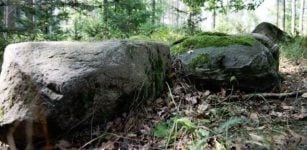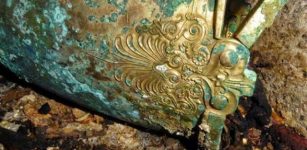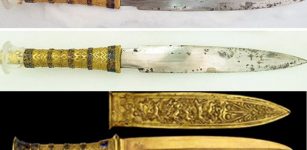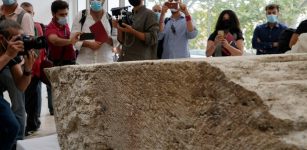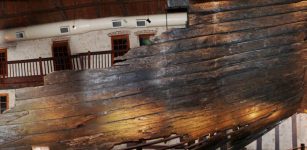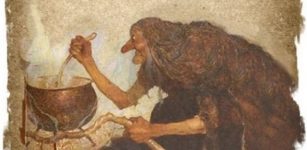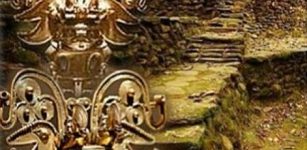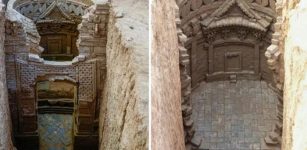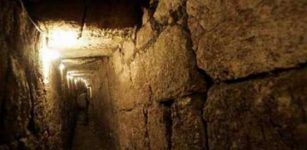Ancient DNA Study Reveals Surprise About Britain’s Bronze Age – What Happened On The Orkney Islands?
Conny Waters – AncientPages.com – A new comprehensive study of ancient human remains taken from a cemetery at a site called the Links of Noltland has revealed surprises about Britain’s Bronze Age and explains why Bronze Age artifacts are rare on the Orkney Islands.
The results of the study challenge existing understandings of Bronze Age Orkney and contradict the previous assumption of a massive movement of people or hostile invasion in the region.
The Ring Of Brodgar, Orkney Islands. Credit: Adobe Stock – Karl
Links of Noltland is an archaeological site located near Grobust Bay on the north coast of Westray in Orkney, Scotland. To archaeologists, it is vital to study the site as quickly as possible because prehistoric remains, which hitherto were protected beneath sand dunes, have been exposed by erosion and, without intervention, will soon be entirely destroyed.
“Eventually, there’s too much sand, and the area gets abandoned,” says co-author Graeme Wilson, an archaeologist at EASE Archaeology, a commercial firm in the United Kingdom.
View over the Links of Noltland site, looking west. Credit: Photograph by D. O’Meara /Antiquity
It has been known that about 4,500 years ago farmers on the Orkney Islands lived a life dominated by ceremonies, traditions, sophisticated tool-making, and they worked with their cattle. Then, within one millennium, their lifestyle suddenly changed.
They no longer felt a need to set up ceremonial stones, their tools were not complex anymore and they switched from cattle farming to sheep herding.
What factors contributed to the adaption of a new lifestyle?
According to the authors whose study was published in Antiquity “the remarkable archaeological record of Neolithic Orkney has ensured that these islands play a prominent role in narratives of European late prehistory, yet knowledge of the subsequent Bronze Age is comparatively poor. The Bronze Age settlement and cemetery at the Links of Noltland, on the island of Westray, offers new evidence, including aDNA, that points to a substantial population replacement between the Late Neolithic and Bronze Age.
Focusing on funerary practice, the authors argue for interconnecting identities centered on household and community, patrilocality and inheritance. The findings prompt a reconsideration of the Orcadian Bronze Age, with wider implications for population movement and the uptake of cultural innovations more widely across prehistoric north-western Europe.”
Examination of ancient DNA remains shows women played an important role in the changes that occurred on the Orkney Islands.
Paired buildings at Noltland. Credit: EASE Archaeology via the Antiquity
“Ancient DNA analysis of the human remains revealed a surprise: Men buried there retained the genetic signature of their Stone Age farmer ancestors long after it disappeared on the mainland, the team reports today in Antiquity. The women buried in the cemetery, meanwhile, had steppe ancestry, similar to the Bronze Age people who dominated mainland Great Britain.
That shows men on the island stayed put, whereas women moved in from other islands or the nearby mainland over the course of centuries, a marriage system anthropologists call patrilocality. Such a system would have had to be widespread to work over many generations: Rather than a “mass migration,” Wilson says, the influx of women onto the island was “more of a constant trickle” occurring in other places nearby at the same time.
Skeletal remains at a cemetery from 1800 B.C.E. yielded clues to marriage patterns in the Bronze Age. Credit: EASE Archaeology via the Antiquity
The phenomenon could help explain why Bronze Age artifacts are scarce on the Orkney Islands: Women married into an existing society a few at a time over the course of centuries, mostly adopting the culture and customs of the island. The phenomenon could help explain why Bronze Age artifacts are scarce on the Orkney Islands: Women married into an existing society a few at a time over the course of centuries, mostly adopting the culture and customs of the island,” the American Association for the Advancement of Science reports.
There was never a violent invasion during this time in the history the Orkney Islands.
See also: More Archaeology News
However, archaeologist Alison Sheridan, an emerita curator at National Museums Scotland disagrees with the conclusion pointing out she cannot find evidence of a major influx of women into the Orkney Islands during the Bronze Age.
“There is no evidence for large numbers of people migrating to Orkney at any time between 2500 B.C.E. and 1500 B.C.E., even though there was clearly contact and interaction with the outside world,” Sheridan says. “This paper, while interesting, poses more questions than it answers.”
Written by Conny Waters – MessageToEagle.com – AncientPages.com Staff Writer





